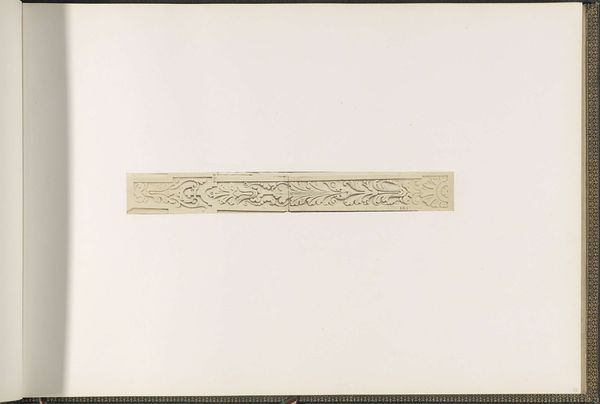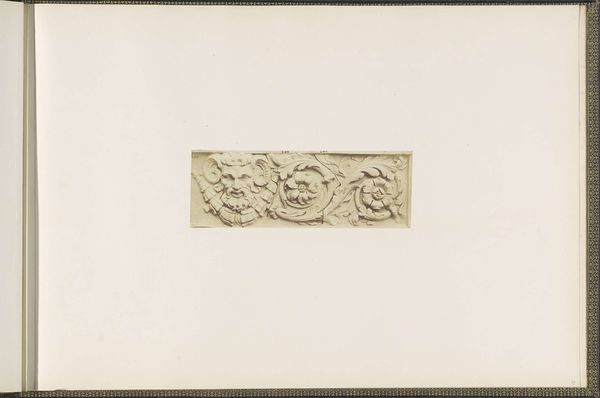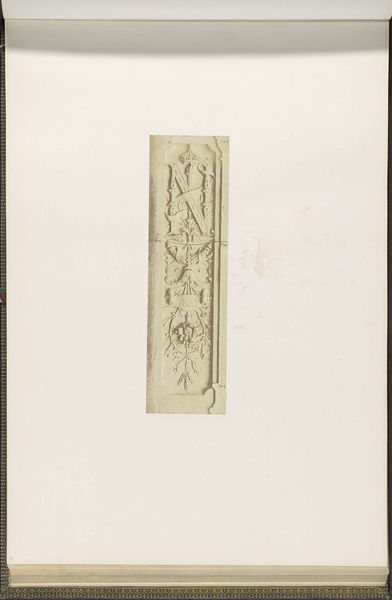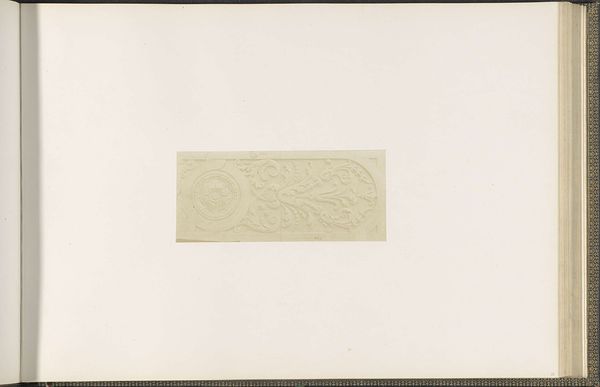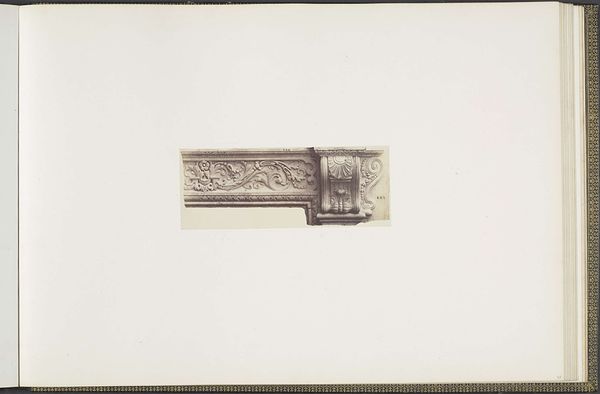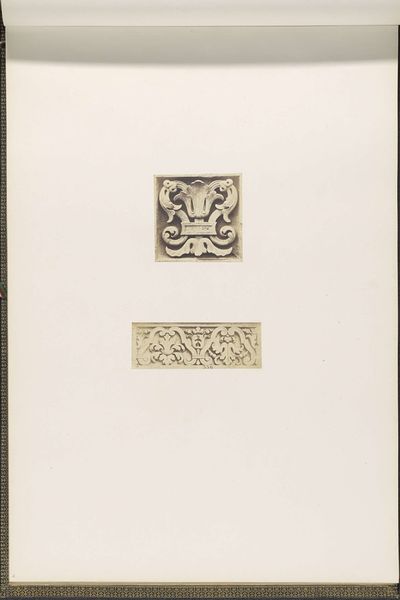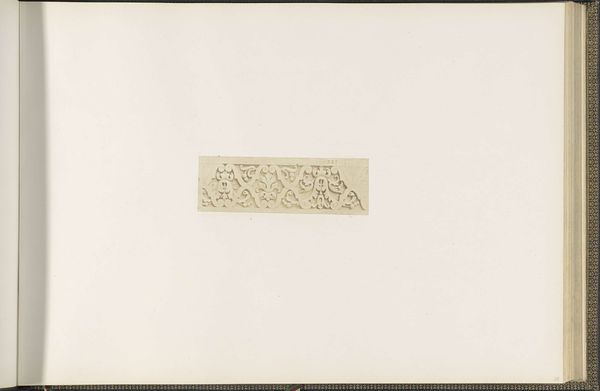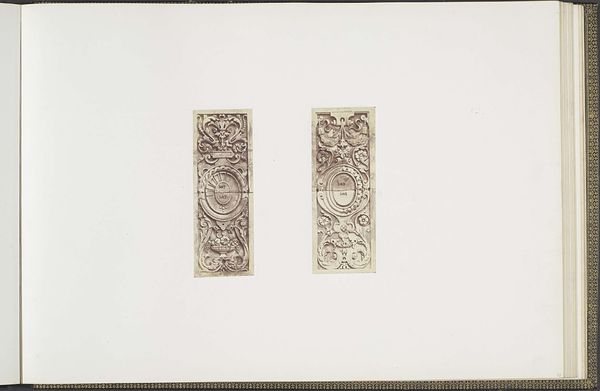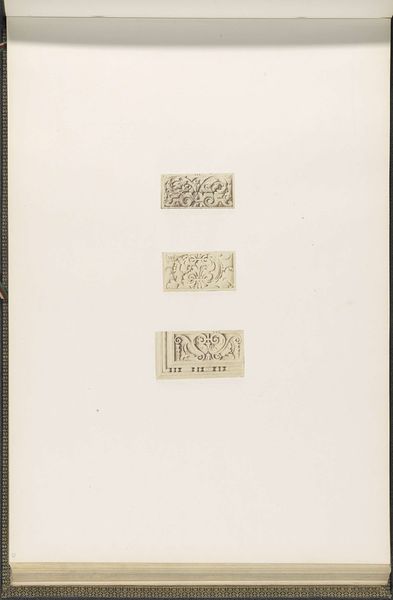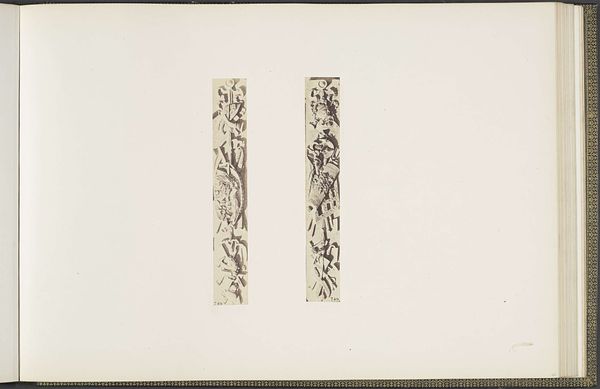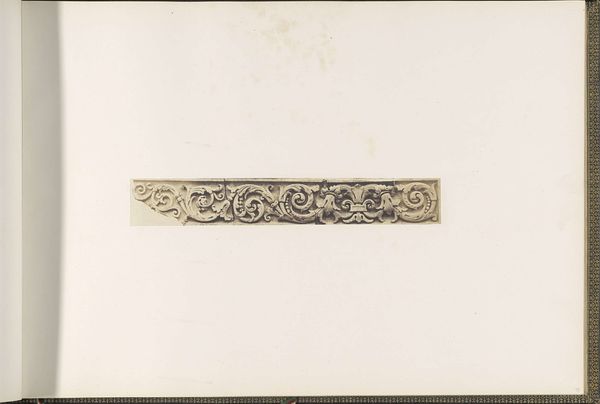
Gipsmodel voor een friesversiering op het Palais du Louvre door Jean-Pierre Hurpin c. 1855 - 1857
0:00
0:00
edouardbaldus
Rijksmuseum
drawing, print, relief, photography, architecture
#
drawing
#
neoclacissism
# print
#
relief
#
photography
#
architecture
Dimensions: height 376 mm, width 523 mm
Copyright: Rijks Museum: Open Domain
Editor: So, here we have a photographic print, a "Gipsmodel voor een friesversiering op het Palais du Louvre door Jean-Pierre Hurpin," created around 1855-1857. It's a plaster model for a frieze, intended for the Louvre. There's something so… removed about seeing architecture depicted this way, almost clinical. What stands out to you? Curator: The interesting thing here is to think about what Neoclassicism meant during that period. It wasn’t just an aesthetic preference; it was a declaration. This frieze, designed for the Louvre under Napoleon III, evokes the grandeur of ancient Rome to legitimize imperial power. How does a regime use cultural capital to build its authority? What does this tell us about the politics embedded within aesthetic choices? Editor: So the image itself is almost secondary, it's the intention behind the art being replicated here? Curator: Not quite, the photograph is useful here precisely because of its clinical nature. How can we interpret Baldus' photographic techniques in connection to this Neoclassical architecture? We see a detachment in the medium itself that speaks to power and ideology; what’s included, what's left out and how is that controlled? It’s about creating a very specific narrative, wouldn’t you agree? Editor: Yes, I can definitely see the power dynamics you're pointing out. The choice of Neoclassicism wasn't arbitrary, it was a conscious decision to align with historical empires. Curator: Exactly! It reminds us to question the narratives that architecture and photography, together and separately, construct. Editor: It makes me wonder about how different materials, like plaster and photographs, speak to authority too. It all fits together so powerfully! Curator: Indeed! And considering these power structures, how are women represented or silenced by such dominant architectural and artistic voices? Whose stories are we *not* hearing? Editor: That's something I'll definitely keep in mind. It shifts my focus from just admiring the aesthetics to understanding its political context.
Comments
No comments
Be the first to comment and join the conversation on the ultimate creative platform.

